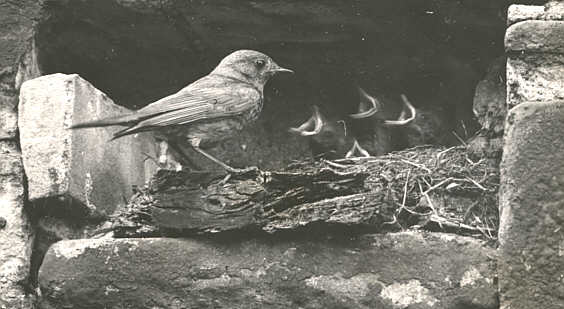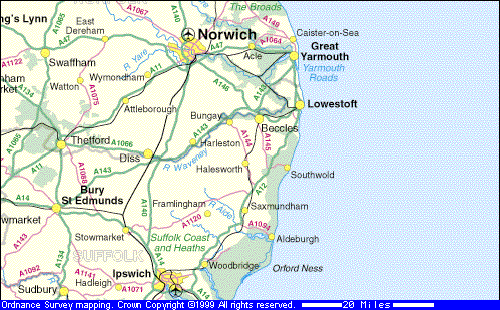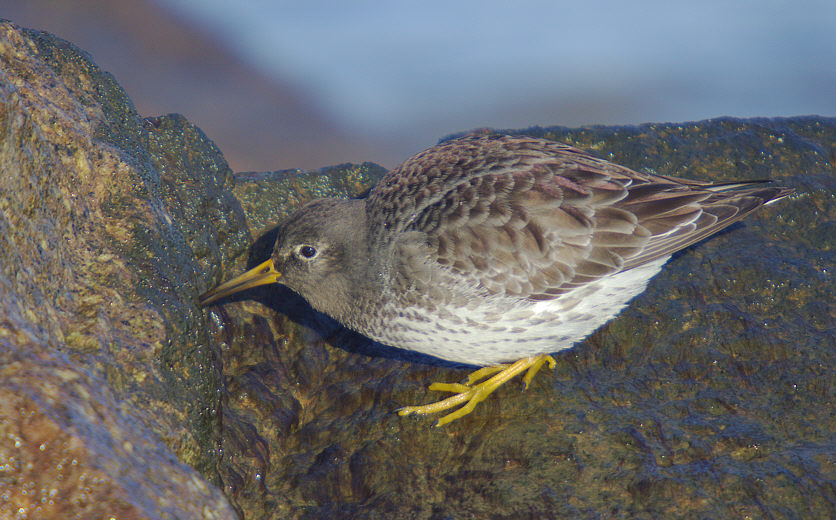|
|
 |
|
Black Redstart - Whapload Road 1950 - ©Jim Warner (supplied by Jim Read) |
ABOUT US
The Lowestoft Bird Club is a very informal group of
birdwatchers/birders from the Lowestoft area of north Suffolk.
We currently get together once a month for an informal
chat and a drink at 20:00 hours on the first Thursday of each
month (from June 2018) (except December, when there isn't a meeting)
in the bar of the Stanford Arms public house in Stanford
Street in central Lowestoft. We used to publish our own
occasional newsletter, the The Lounge Lizard, but this website
has now replaced it. A few example articles from this can be
accessed here or via the Lounge
Lizard Articles button.
We patrol the area between the County boundary between Norfolk
and Suffolk to the north, which runs along the River Waveney
and then along the centre of the navigation channel at Breydon
Water to the harbour mouth at Gorleston. (Please don't be
confused by the Norfolk County Council Local Government
administrative boundary roadsigns at Hopton); and the River
Hundred at Kessingland to the south. Then westwards to
Beccles. To a large extent this is the old Half Hundreds of
Lothingland and Mutford.
So why does our website about birds have a Lizard as its logo?
Well it all dates back a few years to when birds used to occur in the south of the County. Large numbers of migrants used to be drawn to the brilliant white floodlights of Felixstowe docks. As a result whenever we visited to see the rare ones, we were said to be always sitting around in our armchairs waiting for the call to go to Landguard Bird Observatory or Fagbury Cliffs; and not out looking for birds ourselves. Hence the name the Lounge Lizards, which we quickly adopted for our own very informal bird club.
Overnight the situation changed when the white lighting was replaced with less intense yellow sodium lights, and as a result the birds stopped arriving. So you are now more likely to see a Pallas's Warbler, Phylloscopus proregulus, in Lowestoft than in Felixstowe.
Hopefully the lighthouse here in Lowestoft will continue to draw Red-eyed Vireos, Vireo olivaceus, and Collared Flycatchers, Ficedula albicollis, into the surrounding parks for a few more years yet.
ABOUT LOWESTOFT
Lowestoft
is the most easterly town in the United Kingdom, and is
situated in the north-east corner of the County of Suffolk.
Formerly a major fishing port, now the local economy depends
mainly upon tourism.
 |
Image produced from the Ordnance Survey Get-a-map service. Image reproduced with kind permission of Ordnance Survey and Ordnance Survey of Northern Ireland.
WHEN THERE AREN'T ANY RARITIES AROUND WHAT CAN I EXPECT TO SEE?
Well, to start with just a note to let you know what you will NOT see anymore.
Many magazines and books will still tell you that
Lowestoft is a good bet for seeing Glaucous, Larus
hyberboreus, and Iceland Gulls, L. glaucoides.
Up until the early 1980's this was certainly true and any
winter visit to the area around Ness Point would almost
certainly produce both birds sometimes several of each. They
were attracted, along with many hundreds of other gulls, to
the rich pickings of the reject and scrap bins of the Birds
Eye food processing factory. The factory is still there, but
most of the waste is now taken away before the gulls can get
to it, and the fishing fleet of large trawlers has almost
gone, so we don't get very many gulls at all now. The fish
market is still active and serviced by small boats rather than
large trawlers, so there are still some gulls to look through,
but no where near the numbers we used to get. Glaucous and
Iceland Gulls are now both extremely rare here and are usually
just single day migrants if we are lucky.
 |
|
Purple Sandpiper - Ness
Point - November 2011 © Andrew Easton |
Now back to what you are likely to see.
Purple Sandpipers, Calidris maritima, are
still regular winter visitors in small numbers to the Ness
Point area, but can be difficult to locate at times as the
coastal defenses along the coast from Ness Point south to the
harbour mouth have been beefed up with huge granite boulders
which provide greatly increased feeding and hiding places for
them. They also wander north from Ness Point onto the
remains of the old concrete sea wall that runs the whole
length of the North Beach, when it is exposed. The seas action
periodically buries and then re-exposes this wall.
At very low tide a few can sometimes be found probing in the
mud in the north east corner of Hamilton Dock. You can also
look for them on the granite boulders in the harbour near the
lifeboat station and also on the rock groyne extending south
from the South Pier, though they are far less frequent
visitors to this spot. Up to around 10 have been seen in
recent winters, a long way from the County record of 44
recorded at Ness Point in March 1988.
Shag, Phalacrocorax aristotelis, used to be very regular winter visitors, sometimes into double figures, and could be seen on Lake Lothing, and sometimes even Oulton Broad itself during the day. They would return to roost each evening around the harbour, often with the Kittiwakes on the roof of the now demolished South Pier Pavillion. Over the years they too have declined and almost disappeared, but then an influx occured in the winter of 1998/99 with up to 11 birds present including three juveniles ringed on the Isle of May, Fife in Scotland. Smaller numbers, up to five, reappeared during the 1999/2000 winter, with one juvenile again from the Isle of May.
Rock Pipits, Anthus petrosus, are
annual winter visitors in small numbers along the coast, and
are best looked for at Ness Point or around the harbour. They
regularly feed on scraps discarded by tourists and fishermen
on the South Pier. Most appear to be of the Scandinavian
race A. p. littoralis. One of the much darker
nominate race, from Britain or north-west France, on Lowestoft
South Beach 1st June 1990 was the first June record of either
race for the County.
|
|